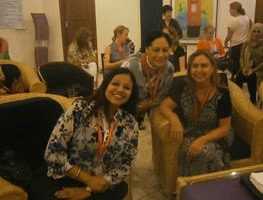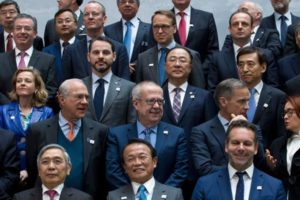About 350,000 people have protested in Barcelona over the jailing of separatist leaders from Spain’s Catalonia region, police say.
The peaceful march was also organised to underline support for Catalonia’s independence movement.
A separate demonstration by a direct action group turned violent on Saturday evening, as protesters targeted the police headquarters.
Spanish unionists plan to hold their own mass rally in the city on Sunday.
Nine separatist leaders were jailed on 14 October by Spain’s Supreme Court for between nine and 13 years after being convicted of sedition.
The days that followed saw some of the worst violence in the history of the modern independence movement, which prides itself on its peaceful tactics.
What happened on Saturday?
Grassroots independence groups had urged independence supporters to fill the streets but said they were committed to peaceful protests, Reuters news agency reports.
A sea of protesters stretched from the city’s waterfront to the landmark Sagrada Familia church.
“It is time to sit down and talk,” one protester told Reuters. “I think it is time for the state to find a solution because it seems that this has no end and we are always at the same point. We have come here because we are fed up with so much repression that we have suffered from the state.”
“We have always defended non-violence,” said another. “What is happening in Barcelona is not a reflection of us, we separatists are not violent, we want our country, we want to be free.”
The day had begun with a gathering of mayors from across Catalonia to endorse the campaign for self-determination.
Mayors of 814 out of the region’s 947 local authorities gathered at the regional government’s headquarters to meet Catalan President Quim Torra.
As the mayors chanted “independence”, Mr Torra said Catalans must unite to oppose “repression” and “force the Spanish state to talk”.
Later on Saturday, a pro-independence group that favours direct action organised a protest outside the police headquarters in the city. Demonstrators threw balls, bottles and stones at riot police.
Riot police later moved to disperse the crowds, armed with shields and batons and backed by riot vans.
Projectiles were fired during the clashes and at least six people were hospitalised with injuries, according to Reuters news agency.
On Sunday, politicians from Spain’s two main centre-right parties, the Popular Party and Ciudadanos, are expected to attend the unionist rally, which comes two weeks before the Spanish general election.
Meanwhile, supporters of the far-right Vox party rallied in the Spanish capital Madrid on Saturday to hear calls for a harder line on the separatists.
Party leader Santiago Abascal attacked Spain’s mainstream parties, including the ruling Socialists, telling the crowd: “Faced with criminal separatism, there is only Vox!”
How bad were the clashes earlier this month?
Rioters threw paving stones and petrol bombs while police fired baton rounds and used truncheons.
Cars and other property were damaged as fires were lit in the streets of Barcelona and other towns.
Between 14 and 20 October, 593 people, including 226 police officers, received treatment for injuries as a result of the protests, according to regional emergency services.
The Spanish authorities later updated the number of officers injured to 289.
Why is there a crisis in Catalonia?
Successive Spanish governments have refused to grant separatists in Catalonia a referendum on independence, which became a live issue again after the global financial crisis of 2008.
Spurred on by the results of an unrecognised plebiscite in November 2014, separatists held an illegal referendum in October 2017, which Spain tried to prevent by force, eventually jailing the separatist leaders.
While the separatists regularly attract massive shows of public support, they have only a slim majority in the regional parliament and a recent survey suggests Catalonia’s residents oppose independence by about 48% to 44%.
Catalonia has its own language and distinctive traditions, and a population nearly as big as Switzerland’s (7.5 million). It is one of Spain’s wealthiest regions, making up 16% of the national population and accounting for almost 19% of Spanish GDP.
The EU has treated the crisis as an internal matter for Spain, deaf to the separatists’ pleas for support, but there have been warnings that the issue is damaging Spain’s democratic credentials.






















